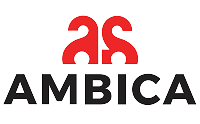301 Stainless Steel
Stainless steel is a widely used material in various industrial sectors. One of the most notable grades of stainless steel is grade 301. In this article, we will examine its chemical composition, physical and mechanical properties. We will also discuss the various uses and welding considerations of mild steel.
301 Stainless Steel Chemical Constitution and Key Properties
Grade 301 is a chromium-nickel alloy and belongs to the austenitic stainless steel type. It is non-magnetic when annealed, but it can show magnetic properties when cold-worked. It is highly durable, showing very good corrosion resistance. Some of the key properties of grade 301 stainless steel include:
|
Chromium (Cr) |
16-18% |
|
Nickel (Ni) |
6-8% |
|
Carbon (C) |
0.15% maximum |
|
Manganese (Mn) |
2% maximum |
|
Silicon, Si |
1% maximum |
|
Phosphorus (P) |
0.045% maximum |
|
Sulfur (S) |
0.03% maximum |
301 Stainless Steel Mechanical Properties
The mechanical properties of grade 301 stainless steel determine its applications. The tensile strength of grade 301 is 1240 MPa, making it durable in different environments. The limit beyond which the metal would start undergoing permanent deformation, known as yield strength, ranges between 515 – 760 MPa for grade 301 SS. In general, stainless steel 301 has a high elongation of approximately 40%. It means that it can stretch before fracturing.
301 Stainless Steel Physical Properties
The physical properties of grade 301 provide insights into its behavior under different conditions. The density of grade 301 is about 8g/cm³, making it a medium-light substance. The melting point of stainless steel 301 is around 1400°C or 2550°F, and it remains stable even when exposed to high temperatures. Heat transfer is excellent, with a thermal conductivity of 14.6 w/m-k.
301 Stainless Steel Grade Specification Comparison
|
Grade |
301 |
|
UNS No |
S30100 |
|
Old British BS |
301S21 |
|
Old British EN |
NA |
|
Euronorm No |
1.4310 |
|
Euronorm Name |
X10CrNi18-8 |
|
Swedish SS |
2331 |
|
Japanese JIS |
SIS301 |
301 Stainless Steel Possible Alternative Grades
The possible alternatives to grade 301 stainless steel include grade 304 and grade 316. Grade 304 is more ductile, owing to the lower work hardening rate. Grade 316 shows higher corrosion resistance and lower work hardening rate.
301 Stainless Steel Corrosion Resistance
Similar to the corrosion resistance offered in grade 304, grade 301 of stainless steel is also highly immune to corrosion. This grade is characterized by high corrosion resistance for applications in mildly corrosive environments at ambient temperature conditions.
301 Stainless Steel Heat Resistance
Grade 301 has good oxidation resistance, serving intermittent services up to 840°C and continuously up to 900°C.
301 Stainless Steel Heat Treatment
Grade 301 Stainless Steel is processed in solution annealing temperature range of 1010°C to 1120°C with subsequent rapid cooling. For the intermediate annealing, a low-temperature zone is picked. Thermal hardening is not applicable for this grade of stainless steel.
301 Stainless Steel Cold Working
Stainless steel grade 301 with low carbon content is commonly used in high strength applications. The cold working of this kind of alloy leads to very high work hardening rates with typical values of 14MPa per 1% reduction in area. As a consequence, cold rolling and roll forming processes can achieve high strength.
301 Stainless Steel Welding
When welding stainless steel grade 301, it's important to consider some key points for optimal results. Preheating the material helps to avoid cracking while welding. Grade 301 has a low carbon content, which avoids carbide precipitation during welding, thus eliminating embrittlement. TIG and MIG are suitable for welding grade 301, producing high-quality results.
301 Stainless Steel Applications
The versatility of stainless steel grade 301 is evident in its wide-ranging applications including:
- Aerospace Industry: Components like aircraft structural parts require high strength and corrosion resistance, making grade 301 worthwhile.
- Chemical Processing: Corrosion-resistant steel stainless 301 is perfect for chemical processing equipment.
- Construction: Grade 301 is durable and attractive, making it a common choice in structural components and architectural elements.
- Food Processing: Stainless Steel 301 resists corrosion, and it is easy to clean, making it a common choice in equipment and machines for the food industry.
